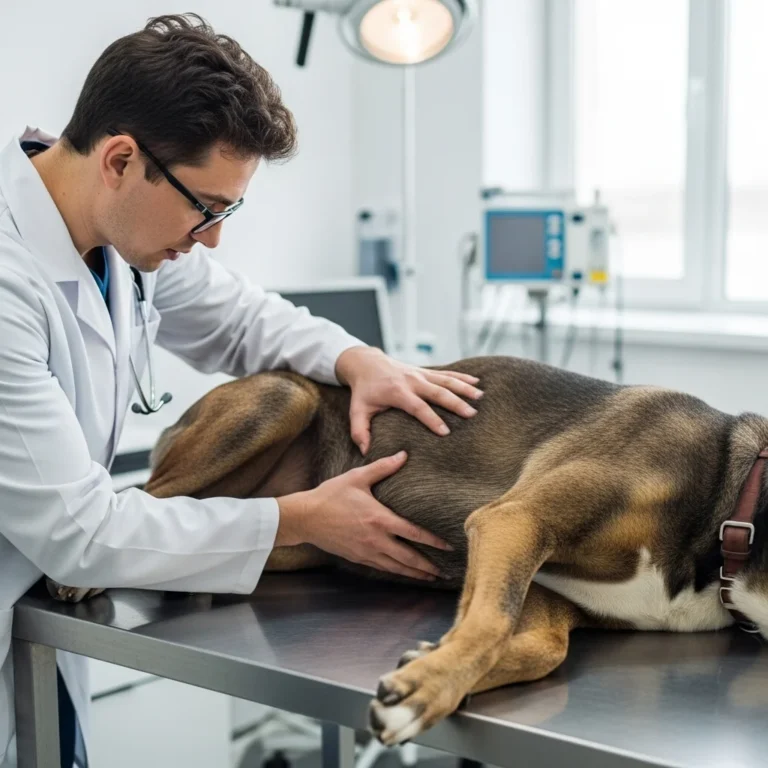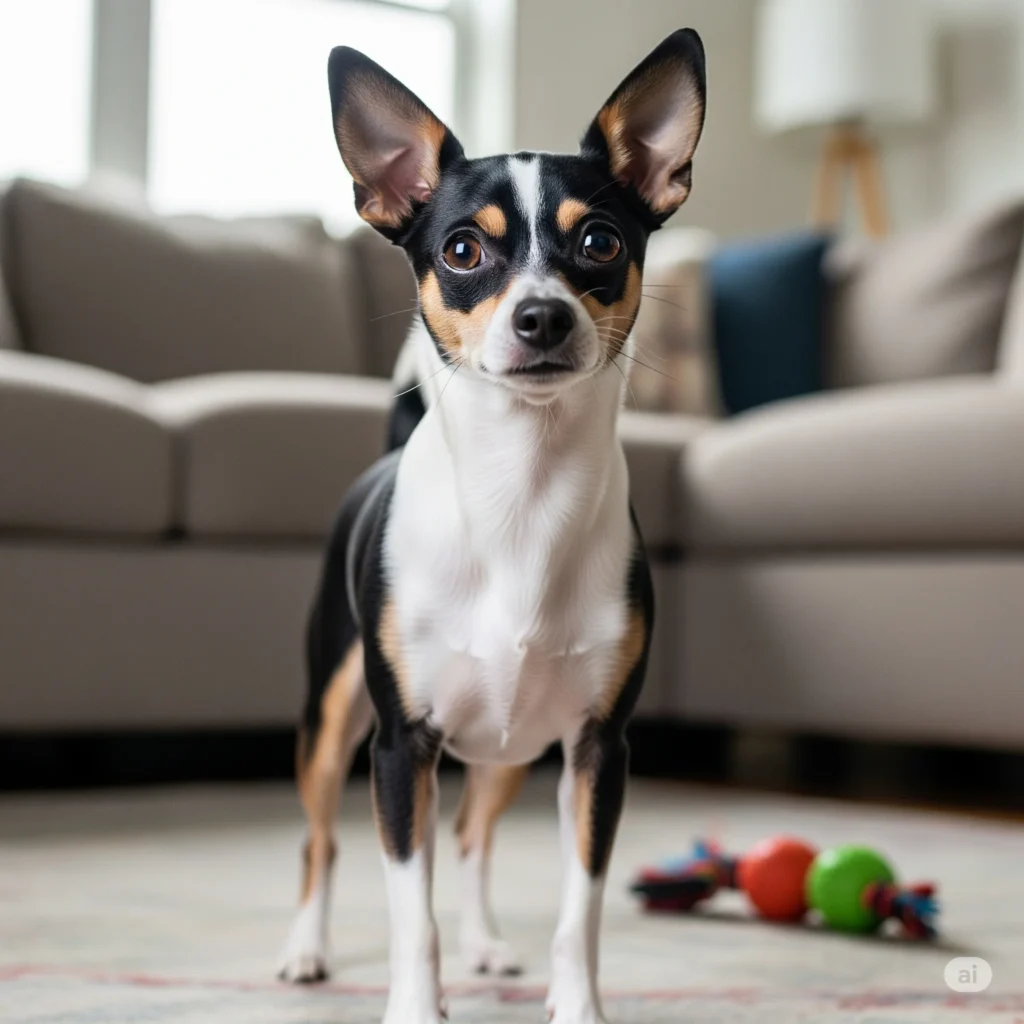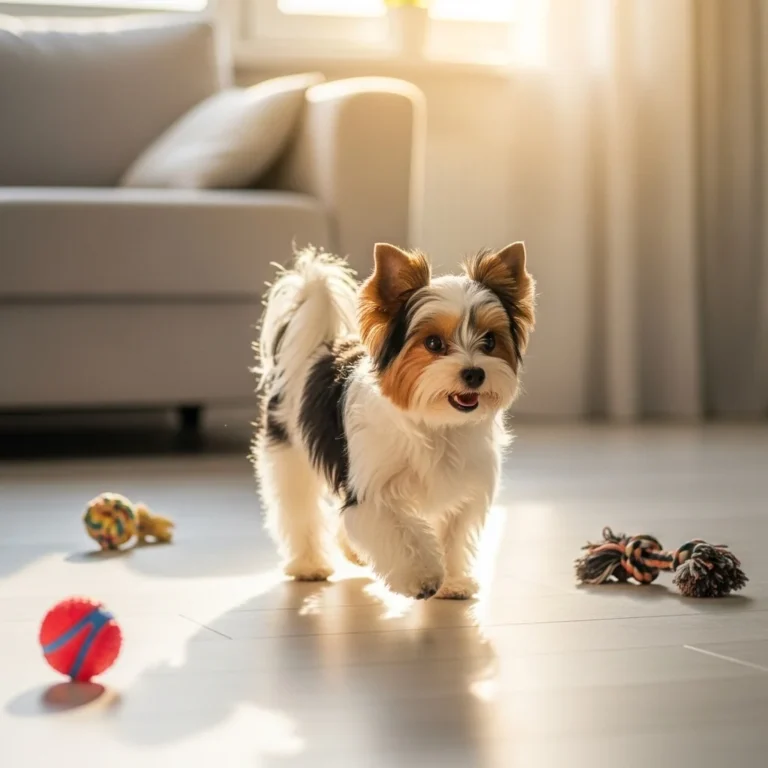
signs of bloat in dogs
You know that weird feeling when your dog starts acting… off? Maybe they just had dinner and suddenly won’t settle down, pacing around like they lost their favorite toy. Or maybe they try to puke but nothing comes out except foam. Yeah — that’s when your stomach drops because something’s definitely not right.
Here’s the thing: when we talk about signs of bloat in dogs, we’re not talking about a little gas or a skipped meal. This is serious business — like, “grab the car keys and call your vet” serious. Vets like Dr. Jamie Lovejoy from PetMD explain that bloat (aka Gastric Dilatation–Volvulus, or GDV) can twist your dog’s stomach and cut off blood flow. It’s terrifying, but the good news is that spotting the warning signs early can save your dog’s life. (source)
Let’s break it down — what to look for, what to do, and how to keep your pup safe, what are the first signs of bloat in a dog, signs of bloat in a dog.
Recognition & Immediate Action
When it comes to bloat, timing is everything. You can literally save your dog’s life just by acting fast.
What are the earliest signs of bloat in dogs?
The early signs can be sneaky. Your dog might pace around, seem restless, or look uncomfortable after eating. According to VCA Animal Hospitals, you might also notice heavy drooling, trouble breathing, or “dry heaving” without actually throwing up. (source)
If your gut says something’s wrong — trust it. You know your dog better than anyone.
What does “unproductive retching” look like and why is it important?
Imagine your dog trying to vomit — the whole heaving motion — but nothing comes out. Maybe a little drool or foam, but no food. That’s what vets call “unproductive retching,” and it’s a huge red flag. The folks at GSVS say that if you see this along with a swollen stomach or labored breathing, it’s a full-on emergency. (source)
Bottom line: if your dog’s dry heaving, drop everything and go.
How can I tell if my dog’s abdomen is distended or hard?
Take a look at your dog’s belly — does it look bloated, hard, or rounder than usual? If you gently tap it and it sounds hollow, that’s not a good sign. According to VCA, some dogs hide the swelling under their ribs, so even if it’s not obvious, don’t ignore your instincts. (source)
When should I rush my dog to an emergency vet for suspected bloat?
Right now. Not in 10 minutes. Not after Googling. Now.
If you see that hard belly, dry heaving, pale gums, or restlessness — that’s your cue to go straight to the emergency vet. GSVS warns that bloat can go from bad to deadly within 1–2 hours. (source)
Call the clinic while you’re on your way so they can prep for you.
Can bloat happen suddenly, and how fast does it progress?
Oh, absolutely — and it moves fast. Once the stomach twists, it can shut down your dog’s entire system in no time. Vets at VMCNY say dogs can go into shock within minutes. (source)
So, if you’re debating “wait and see,” just… don’t. Get in the car.
Symptoms & Physical Signs
Not every dog reads the same “manual” when it comes to symptoms, so here’s what you might notice.
What other symptoms accompany bloat?
Your dog might start drooling like a waterfall, panting like they just ran a marathon, or pacing back and forth like they can’t get comfortable. Their gums might turn pale, too — not a great sign. The PDSA lists all these as major warning signs, plus collapse in severe cases. (source)
If you see that combo — drool, pacing, weird breathing — it’s vet time.
Are there subtle or atypical signs of bloat that owners miss?
Yep. Some dogs are sneaky about it. They might just act weird — lying in odd positions, refusing food, or stretching out like they’re doing yoga (that “prayer” pose with the front legs down and butt up). Dillon Animal Hospital says that’s actually a sign of discomfort from bloat. (source)
So if your dog’s acting strange and you can’t quite put your finger on it — don’t brush it off.
Could vomiting or loose stools be an early sign of bloat?
If your dog’s trying to vomit but only produces foam or nothing at all, that’s classic bloat territory. Regular vomiting or loose stool alone usually isn’t bloat, but paired with restlessness and a swollen belly? You’ve got trouble. (source)
How does a dog act when it’s in pain from bloat?
They might whine, pant, stare at their belly, or assume that “prayer” position we mentioned. Basically, they’re trying to relieve the pressure. (source)
If they won’t let you touch their stomach or keep changing positions, that’s your sign to move — to the vet.
Risk Factors & Which Dogs Are Most at Risk
Some pups are just built in a way that makes them more prone to bloat.
Which breeds and body types are at higher risk for bloat?
If you’ve got a Great Dane, German Shepherd, Saint Bernard, Doberman, or Weimaraner — heads up. These deep-chested breeds are top of the risk list. (source)
They’re majestic, but their anatomy doesn’t do them any favors here. (source)
Are older dogs or dogs with certain medical histories more likely to bloat?
Yes, age definitely plays a role. Research from VMCNY found that the risk of bloat increases by about 20% each year your dog gets older. (source) Family history can make a difference, too. (source)
Does eating too fast, large meals, or exercising after eating increase the chance of bloat?
Pretty much, yeah. One giant meal a day, scarfing down food, or zoomies right after dinner all up the risk. (source)
Use a slow-feeder bowl and give your dog some chill time after meals. It’s a small change that can save a lot of heartache.
Diagnosis, What Vets Look For & Tests
Wondering what happens once you rush to the vet? Here’s the breakdown.
How do veterinarians confirm bloat or GDV?
Your vet will probably give your dog a quick exam, check their gums and heart rate, and then take X-rays. That’s how they tell if it’s just gas or a full stomach twist. The “double bubble” look on X-ray is a telltale sign. (source)
Can a vet tell the difference between simple bloat and GDV immediately?
Not always by touch or sight — they’ll need X-rays to be sure. But trust me, if they suspect GDV, they’ll move fast. (source)
Immediate At-Home Actions and Owner Do’s/Don’ts
You can’t treat bloat at home, but you can absolutely help by staying calm and acting fast.
What should I do while getting my dog to the vet?
Do: Stay calm, keep your dog still, and call the emergency vet on your way.
Don’t: Give food, water, or try to “burp” your dog (yep, people actually try that). (source)
Is there any first-aid I can safely give at home to help a dog with bloat?
Nope. Unfortunately, this isn’t something you can DIY. PreventiveVet puts it plainly: “You cannot treat GDV at home.” (source)
Grab your keys and go — that’s the first aid.
Should I try to make my dog vomit or give water/food?
Big no. Giving anything can make things worse or delay life-saving care. (source)
Just focus on getting to the vet ASAP.
Treatment, Outcomes & Prognosis
What treatments are used for bloat and GDV?
First, vets stabilize your dog with fluids and pain meds, then they release gas and go into surgery to untwist the stomach. They might also attach the stomach to the body wall (called gastropexy) so it doesn’t twist again. (source)
What is the survival rate and how does quick treatment change outcomes?
With quick action, the odds are surprisingly good — up to 80% survival according to Vets-Now. (source)
Wait too long though, and those odds drop fast.
Can bloat happen again after treatment and can it be prevented surgically?
Yep, it can happen again — but gastropexy surgery slashes that risk from 54% to around 4%. (source)
Prevention & Long-Term Management
You can’t control everything, but you can definitely lower the odds.
What steps can owners take to reduce the risk of bloat ?
Try feeding two or three smaller meals instead of one big one. Use slow-feed bowls and give your dog some downtime after eating. (source)
Also, avoid chug-a-lug drinking sessions right after playtime.
If you want to go deeper on feeding tips, check out this guide from DogsBlogss: How to choose the right dog food.
Or read Training your dog to eat slower and calmer — it’s packed with practical advice.
Is prophylactic gastropexy recommended for high-risk dogs?
For deep-chested or large breeds, many vets recommend it. The AKC says preventive surgery can drastically cut risk — and honestly, peace of mind is priceless. (source)
Owner Experience & Emotional Support / Practical Questions
How do owners usually recognize bloat vs. other stomach upset?
A lot of people say they just “knew something was wrong.” That gut instinct is real. If your dog’s pacing, drooling, or dry-heaving, don’t overthink it — just call the vet.
What costs and decisions should owners expect if surgery is required?
It’s not cheap, and it’s okay to talk honestly with your vet about options. The PDSA reminds owners to be upfront about budget and what feels right for their dog. (source)
Where can I find quick, trustworthy advice if I suspect bloat?
Keep your emergency vet’s number on your fridge or phone. GSVS says to call an emergency clinic immediately if you even think it might be bloat. (source)
Final Thoughts
Bloat is terrifying, but knowledge is power. Now that you know the sign of bloat in dogs, you’re already ahead. The faster you act, the better your dog’s chances — and that’s what really matters.
So next time your pup’s acting weird after a meal, don’t panic — but don’t ignore it either. Trust your gut, grab your keys, and know that you’ve got this.
Your dog’s got your back every day. This is one of those rare times you get to return the favor. 🐾
please leave comment
you may like it






